Ontario Wildlife at The Franklin Club - What you might see on along our trails and shorelines.
The Franklin Club isn’t just home to trout-filled waters—it’s also a haven for some of Ontario’s most fascinating wildlife. While members may come for primarily for the fishing, many end up falling in love with our lands and outdoor trails. Our 200-acre property is rich with natural habitat, making it a quiet sanctuary for a wide variety of Ontario wildlife that you might spot while walking the trails, enjoying a picnic, or simply sitting still and taking it all in.
Here’s a fun and local guide to some of the wildlife guests and residents you just may see or happen to cross paths with when you’re at The Franklin Club.
Cottontail Rabbit
These familiar little rabbits are quick-footed and alert, and you’re most likely to spot them near trail edges or open grassy areas. They prefer early morning or dusk when it’s quieter, and they can feed more safely. While they’re small, they’re impressively agile and perfectly suited to the woodland edges and meadows of the Club. Did you know?
- Cottontail rabbits are commonly seen at dawn and dusk, often nibbling along trail edges.
- They’re incredibly fast and can leap up to 10 feet in a single bound when startled.
- Their excellent hearing and wide field of vision help them detect danger quickly.
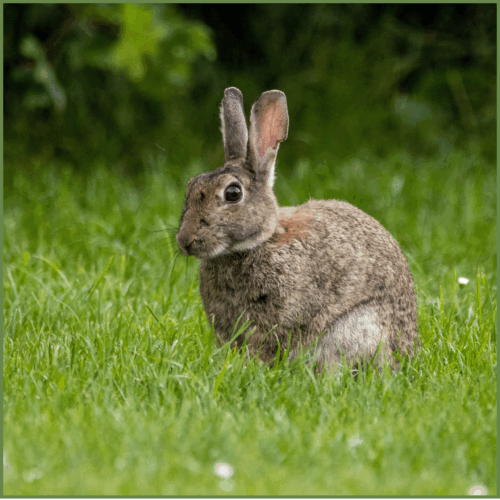
Snowshoe Hare
Though often mistaken for cottontails, snowshoe hares are larger, with oversized hind feet and a unique seasonal trick. These hares are built for stealth and speed, especially in the colder months. They thrive in forested areas with plenty of cover and are most active when the woods are quiet. Did you know?
and have some cool seasonal tricks up their sleeve.
- Snowshoe hares change their fur colour with the seasons—from brown in summer to white in winter—for camouflage.
- Their oversized back feet help them move quickly across snow—hence the name!
- Snowshoe hares are more likely to be seen in dense forested areas and are most active during twilight hours.
.
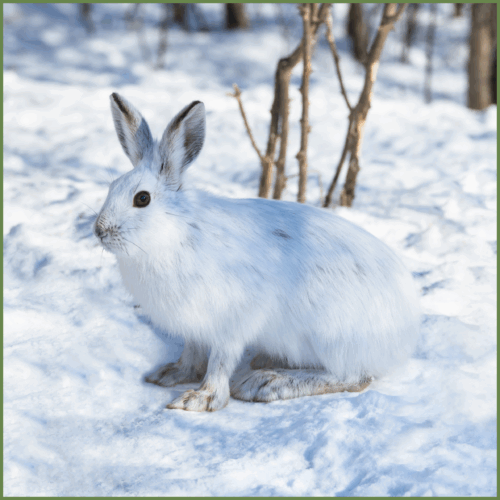
Red Fox
The red fox is one of Ontario’s most beautiful and resourceful predators. With their bright orange coats, bushy tails, and cat-like agility, they move gracefully through meadows and forest clearings—often seen trotting along trail edges. These animals are solitary by nature but leave behind signs like tracks, dens, and the occasional eerie nighttime call. They’re highly adaptable and thrive in a variety of environments, from dense woods to open farmland. Did you know?
- Red foxes are excellent mousers and use a signature high-arching pounce to catch prey.
- They have a range of vocalizations, including yips, barks, and eerie screeches—often mistaken for other animals at night.
- Their bushy tails help with balance and are used to wrap around themselves for warmth in winter.
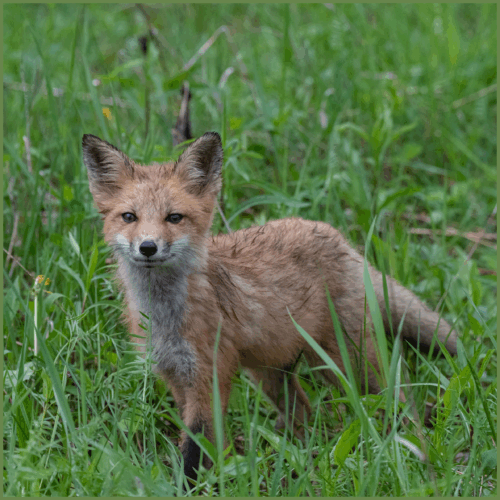
Chipmunk
These pint-sized foragers are constantly on the move, zipping across trails and low branches in search of snacks. Chipmunks are as charming as they are quick, often seen with bulging cheeks packed full of seeds. With their striped backs and twitchy tails, they’re hard to miss and fun to watch. Did you know?
- These small, striped rodents are busy little gatherers—often seen stuffing their cheeks with seeds and berries.
- Chipmunks dig intricate burrows with multiple entrances and food storage chambers.
- Their warning chirps are a common sound in the forest, alerting others of nearby danger.
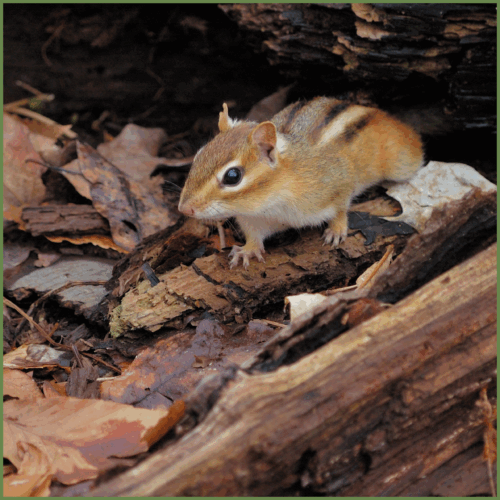
Raccoon
You may catch a glimpse of these masked bandits prowling near the clubhouse after dark. Raccoons are famously curious, clever, and surprisingly nimble. Despite their mischievous reputation, they play a big role in Ontario’s ecosystems by helping keep waste in check. Did you know?
- Raccoons are intelligent and curious creatures known for their hand-like paws.
- They can open latches, twist knobs, and even unzip backpacks!
- Most active at night, they often wash their food in water, though no one knows exactly why.
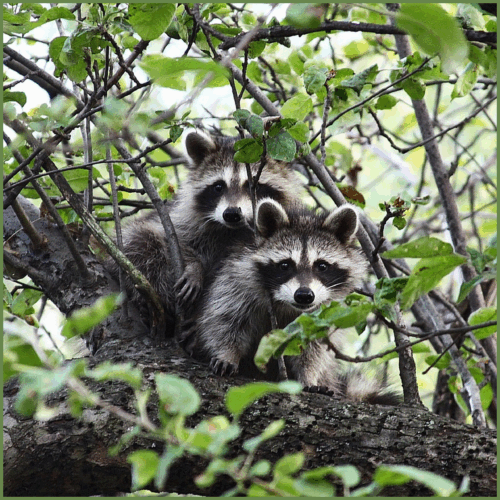
Porcupine
With their quiet habits and unmistakable quills, porcupines are among the more surprising creatures you might encounter. These solitary climbers often go unnoticed, nestled in trees or ambling across trails. Give them space, and they’ll show you just how peaceful and reserved they truly are. Did you know?
- These shy, slow-moving mammals are covered in thousands of sharp quills for defense.
- Porcupines can’t shoot their quills, but they detach easily if touched.
- They’re often found in trees, snacking on bark and leaves.
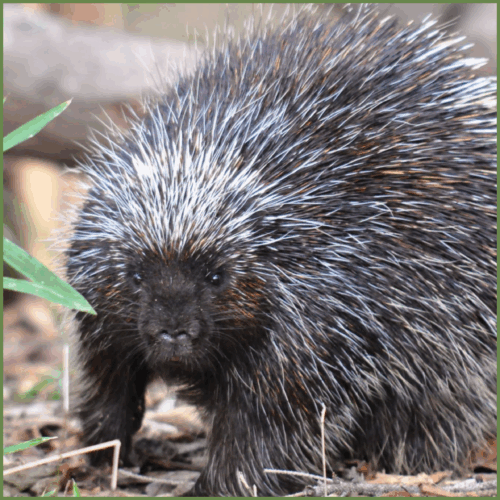
Coyote
Coyotes are the ghosts of the forest—rarely seen but often heard. Their distinct yips and howls echo through the trees, especially during the early morning or twilight hours. These adaptable animals are cautious but essential members of Ontario’s wild landscape. Did you know?
- Coyotes are highly adaptable and play an important role in managing rodent populations.
- Coyotes communicate with yips, howls, and barks—and often travel in family groups.
- While wary of people, they’re more likely to be heard than seen.
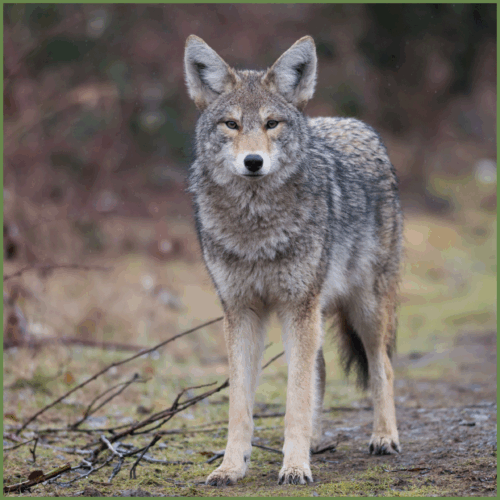
North American River Otter
Otters are some of the most playful mammals in the wild, and spotting one at the Club is a real treat. They’re strong swimmers, often seen tumbling in pairs or sliding on muddy slopes. Otters thrive in clean water and are indicators of a thriving environment. Did you know?
- River otters are playful swimmers often seen sliding down muddy banks or playing in the water.
- They hold hands while sleeping in water to avoid drifting apart.
- Otters are a sign of a healthy ecosystem and clean waterways.
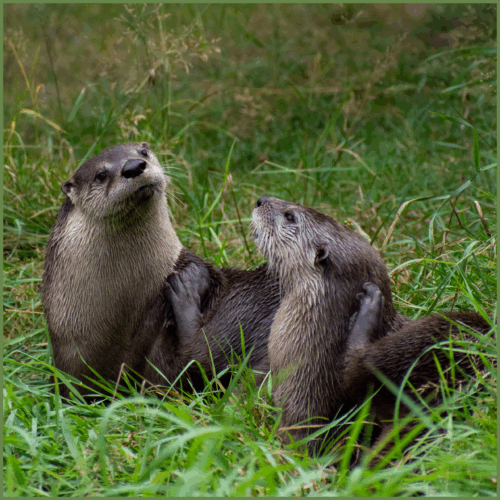
Grey Squirrel
Grey squirrels are the most commonly spotted of the bunch, especially around open areas and near trees. Their adaptability has made them a staple in both city parks and forested regions across Ontario. These squirrels are clever, agile, and often quite bold. Did you know?
- Grey squirrels bury thousands of nuts in the fall to prepare for winter—but they don’t always remember where they left them.
- They’re often seen hopping through trees or darting across open areas.
- Their thick bushy tails help with balance and warmth in colder months.
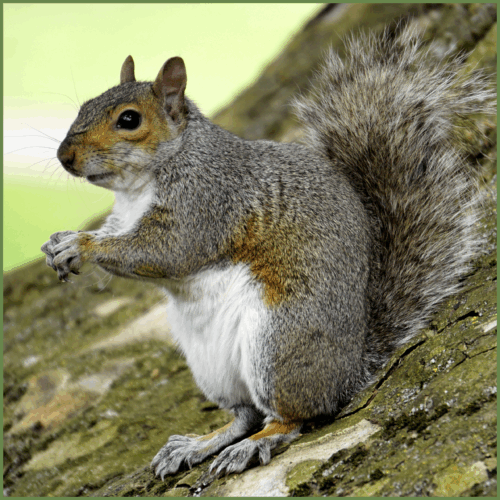
Red Squirrel
Red squirrels are smaller than their grey cousins but make up for it with attitude. They’re highly territorial and are known for their loud, rapid chattering when disturbed. You’re most likely to spot them dashing between evergreens or scolding from a branch above. Did you know?
- They’ll often chatter loudly to let you know you’re in their space.
- Red squirrels create hidden food caches called “middens,” where they store cones and nuts for the winter.
- They prefer coniferous forests and are often seen collecting pine cones.
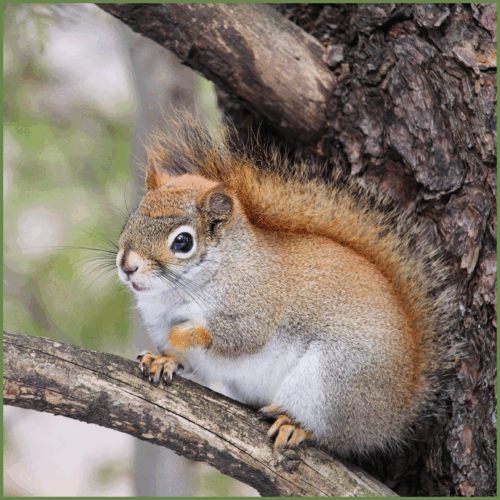
Black Squirrel
Black squirrels are a striking sight, and though they’re just a colour variant of the grey squirrel, they stand out with their sleek dark fur. In Ontario, they’re more common than in most other provinces, often thriving in a mix of urban and rural settings. They’re just as active and energetic as their grey counterparts. Did you know?
- Their dark fur helps them absorb heat—an advantage in colder weather.
- Black squirrels are more common in Ontario than in many other provinces due to specific urban and rural habitat mixes.
- Like grey squirrels, they can often be seen chasing each other through the trees or burying nuts in soft ground.
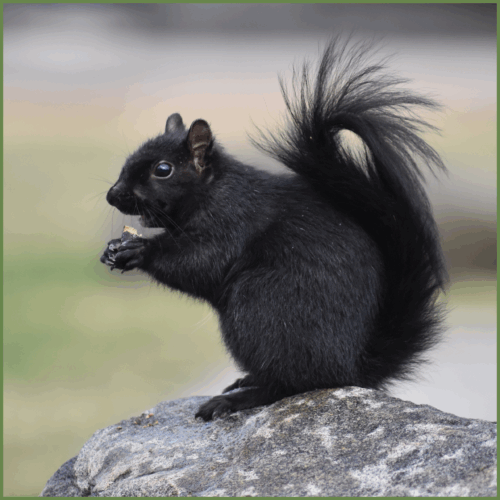
Voles
Voles are secretive, quick-moving rodents you’ll rarely see, but they leave their mark in the form of tiny runways in tall grass. Though shy, these tiny mammals play a huge role in the food chain, feeding owls, foxes, and other predators. They thrive in the thick, undisturbed ground cover found around The Franklin Club. Did you know?
- These tiny creatures look like short-tailed mice and create surface runways through grass and underbrush.
- Voles can have multiple litters a year and are a key prey species for many predators.
- They’re most active at dawn and dusk but are rarely seen due to their low profile.
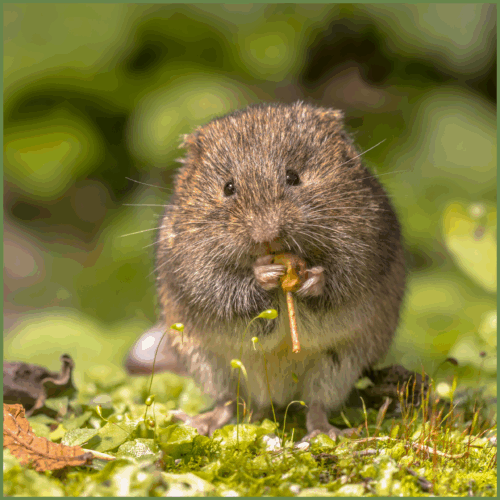
White-tailed Deer
Graceful and quiet, white-tailed deer are among the most iconic animals in Ontario. They’re often spotted in meadows or near the tree line, especially during the peaceful hours of dawn and dusk. Their white tail flashes upward when alarmed, signalling others to run. Did you know?
- White-tailed deer are graceful browsers often seen in forest edges and open meadows.
- Their tails flash white as a warning signal when they flee.
- They’re most active at dawn and dusk and leave behind heart-shaped tracks in soft soil.
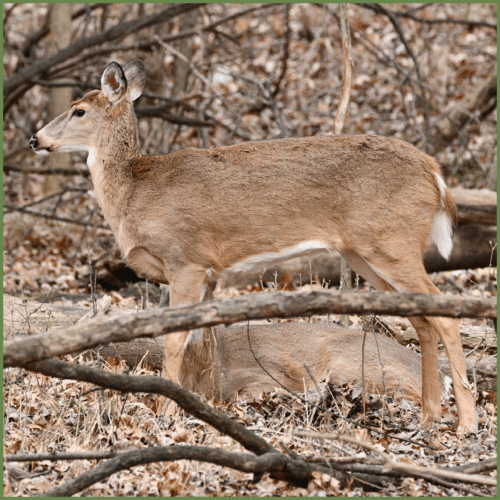
Opossum
You probably won’t see this one unless you’re out late—they’re slow movers, but full of surprises. The opossum is North America’s only marsupial and is equipped with a prehensile tail, sharp teeth, and a bizarre but effective defence mechanism: playing dead. They may look odd, but they’re hardy and adaptable survivors. Did you know?
- Canada’s only marsupial, the opossum is a slow-moving scavenger with a prehensile tail.
- When threatened, it really does “play dead”—a behaviour called thanatosis.
- Their immune systems are highly resistant to snake venom and rabies.
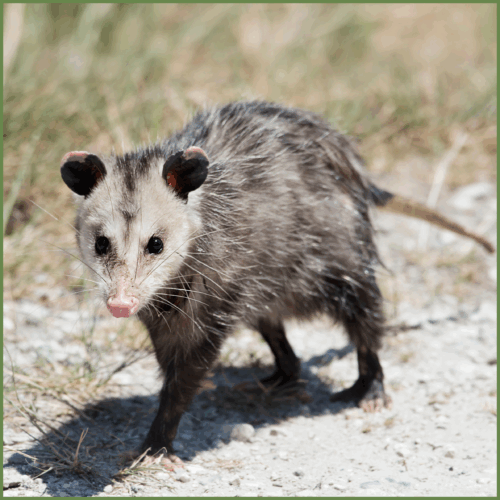
Minks
If you’re lucky, you might catch a flash of brown fur streaking along the water’s edge—that’s a mink on the hunt. These small, sharp-eyed predators are full of energy and rarely rest. Their presence is a sign of healthy water systems and a balanced ecosystem. Did you know?
- Mink are small, sleek carnivores often spotted near water.
- They’re fierce hunters and will take on prey larger than themselves.
- Their luxurious dark brown fur was once highly prized in the fur trade.
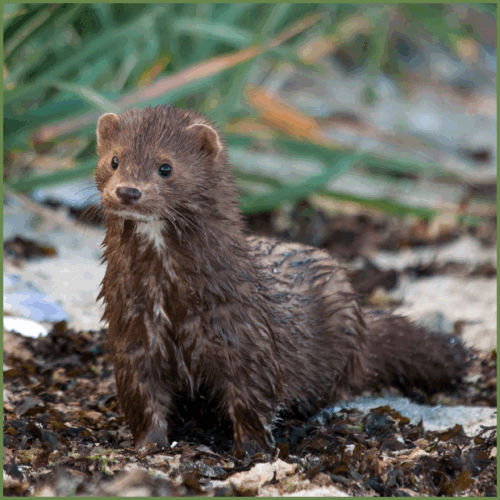
Moles
Moles are built for a life underground, with paddle-like front feet, velvety fur, and a keen sense of touch. Though rarely seen above the surface, they play an important role in the soil ecosystem—naturally aerating the earth as they tunnel. Did you know?
- Moles have powerful front paws and can dig extensive tunnels in search of insects and grubs.
- Their hearing and eyesight are poor, but their sensitive snouts help them navigate underground.
- You’ll spot signs of moles from small dirt mounds and raised soil tracks in lawns or soft areas.
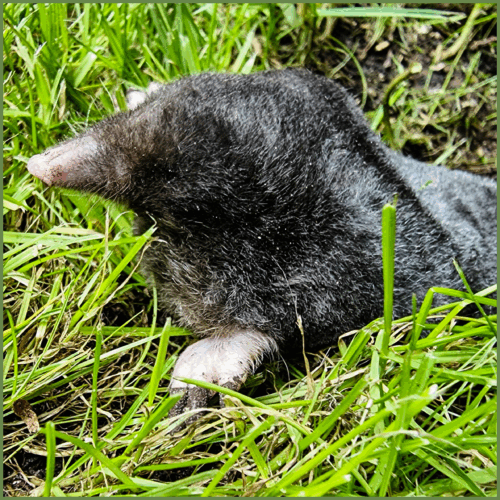
Keep Your Eyes and Ears Open!
Whether you’re walking a forest trail, having lunch by the water, or drifting quietly across Franklin Lake, take a moment to slow down and observe your surroundings. Ontario’s natural wildlife is all around us, even when it goes unnoticed. From the chatter of squirrels in the trees to the quiet presence of a deer at the tree-line, each visit to The Franklin Club offers a new opportunity to connect with the natural world.


